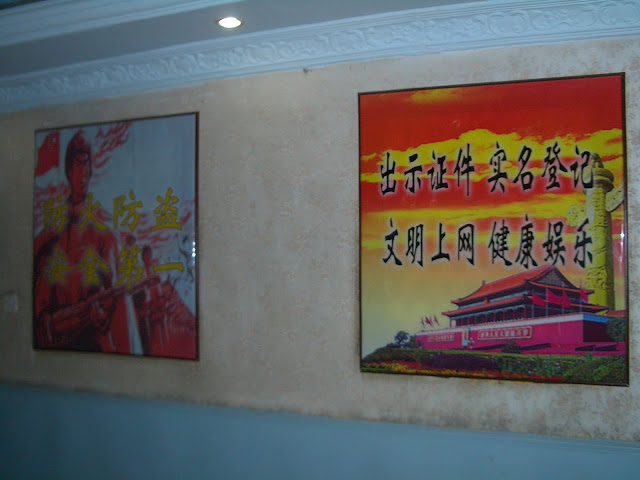 Internet cafes in many parts of China normally ask customers for an ID of some
kind (this seems to be controlled by provincial laws, and the strictness of the law's enforcement at a particular place). I have never figured out which places would require one and
which would not (although places in bigger cities seemed to be
stricter in this respect). I assume that most customers would present
standard national ID card, and from a foreigner, a passport and visa
would be expected. In practice, though, a foreign provincial ID card
would usually do. I used to carry a very nice library card from an
Italian library, complete with my photo, and it was accepted as an ID
as well. (A pity it was lost a while back by Air China, along with all
my luggage!).
Internet cafes in many parts of China normally ask customers for an ID of some
kind (this seems to be controlled by provincial laws, and the strictness of the law's enforcement at a particular place). I have never figured out which places would require one and
which would not (although places in bigger cities seemed to be
stricter in this respect). I assume that most customers would present
standard national ID card, and from a foreigner, a passport and visa
would be expected. In practice, though, a foreign provincial ID card
would usually do. I used to carry a very nice library card from an
Italian library, complete with my photo, and it was accepted as an ID
as well. (A pity it was lost a while back by Air China, along with all
my luggage!).
This time, in Qufu, Shandong Province, the fellow on duty decided that neither a foreign ID card, nor a passport with a current Chinese visa would do. After rummaging in my wallet, I decided to make yet another try with yet another document: a reader's card from the National Library in Beijing. (Not that I ever *read* anything there, but you needed to get a card to get on premises, and getting it was free...). No name or photo on the card, but it was officially looking enough... and bingo, it was accepted!
P.S. As I've looked at more of such places (in Jiangsu mostly), it seemed that the usual mode of operation for them was to swipe a PRC national ID card, which, I assume, all resident citizens are supposed to possess. This way, at least potentially, who uses what becomes automatically loggable (since the login ID given out by the internet cafe may be linked to one's card number). I am not sure what exactly happened when a particular place accepted my passport, a foreign ID card, or even a library card (well, just that once) as an ID; it appeared that in some cases they simply ended up swiping someone else's national ID card on my behalf.
(Poster above: "Present an ID and register with your real name! Civilized behavior on the Internet, and healthy leisure!". Seen in Gansu, 2009).


